Bryan Singer’s Superman Returns turns 10 this month, and over the last decade, it’s built up a decidedly mixed legacy. A quasi-sequel to the 1970s and 80s Superman films starring Christopher Reeve (or the first two, at any rate), the film received generally good reviews in 2006. Critics praised Singer’s direction, the cast’s performances, and the lush visuals courtesy of cinematographer Newton Thomas Sigel and production designer Guy Hendrix Dyas.
Yet Superman Returns ended up having a polarising effect on audiences. Commonly criticised aspects of the film were its melancholic vibe, Lex Luthor’s nonsensical evil scheme, and the introduction of a cute kid who effectively transforms Superman into the Deadbeat Dad of Steel. Fans also took Singer and screenwriters Michael Dougherty and Dan Harris to task for the film’s romance-heavy story and lack of a proper superpowered dust-up.
To be honest, this last gripe is a fair one. Many of the set pieces in Superman Returns do indeed boil down to “Superman encounters a heavy object, lifts it”, and the flick is hamstrung by the absence of any real physical threat to the Big Blue Boy Scout. It’s an action movie without all that much action.
Not that it doesn’t have any worthwhile blockbuster moments. On the contrary, Superman Returns delivers a showstopping sequence midway through proceedings, in which the Man of Steel wrangles a Boeing 777 in mid-air. It’s a pulse-pounding superhero action scene that isn’t just the best in the movie – it’s one of the best… ever.
A masterclass in building anticipation
An overlooked aspect of what makes the plane rescue scene in Superman Returns work so well is the anticipation it creates for viewers. Superman (Brandon Routh) has been out of the picture for five years of in-universe time, while in real-time, Singer makes us wait 30 minutes to see our hero suit up. What’s more, back in 2006, Superman last graced the silver screen 19 years earlier, so we really wanted to see him back saving the day again!
So, when a twisted experiment by Lex Luthor (Kevin Spacey) triggers a city-wide electromagnetic pulse – shutting down a plane carrying both an experimental space shuttle and the Man of Steel’s former flame Lois Lane (Kate Bosworth) in mid-flight – our suspense is tempered with a decent amount of excitement, as well. In a stroke of genius, Singer, Dougherty, and Harris continue to play with this growing expectation, teasing us with Superman’s onscreen arrival repeatedly before the full reveal.
First, it’s a shot of Clark Kent tearing open his civilian disguise to reveal the iconic S-shield on his chest. Next, we see a fast-moving arrow on a radar display, followed by a humanoid shape streaking across the sky (outpacing two fighter jets, incidentally!), and then finally a familiar pair of red boots touching down on the 777’s fuselage – all before we finally get our first full shot of the Man of Steel in costume.
With John Williams’ famous “Superman March” blaring triumphantly, it’s the kind of payoff that only well-executed delayed gratification can deliver.
Anchoring spectacle with tangible stakes
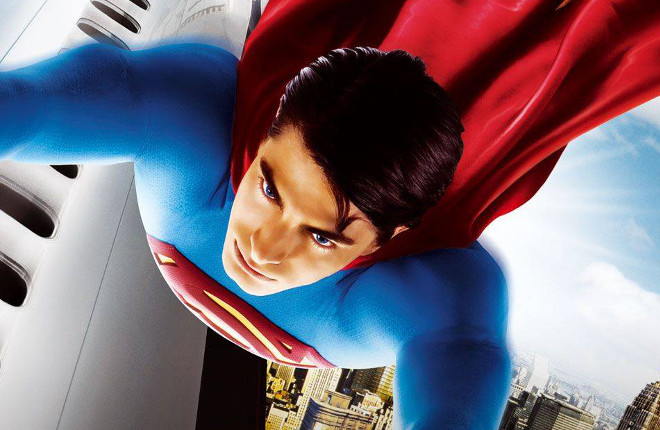
From here, the Superman Returns plane rescue scene shifts gears from subverting audience expectations to exceeding them. Done with tantalizing us, Singer serves up the kind of popcorn cinema thrills you’d expect from the director of X-Men and X2: X-Men United.
Crucially, though, Singer isn’t preoccupied with pyrotechnics and dynamic camera moves (although both are very much present and accounted for). Instead, he spends just as much time anchoring this breathtaking spectacle with tangible stakes. We’re never allowed to forget that if Superman’s efforts outside of the plane fail, dozens of innocent people inside it will die.
So, for every two or three high-octane shots of the 777 whipping past us with Superman latched onto its wing, Singer and editors John Ottoman and Elliot Graham cut back at least once to the journalists – including Lois, of course – in the cabin.
It’s a smart bit of storytelling that circumvents one of the biggest challenges of writing Superman, namely, how do you make audiences care about a guy who’s invulnerable? Singer and co. get that the answer is simple: you make us care about the people he’s trying to save, and show us how much he cares about them, too.
This holds true, even when Singer, Dougherty, and Harris ratchet up the scale of the scene further. After the plane breaks through the cloud cover on its deadly downward descent, we discover it’s headed for a packed-out baseball stadium – further illustrating how much a truly memorable Superman action scene hinges on getting the audience to value innocent lives.
Slick, (mostly) seamless visual effects
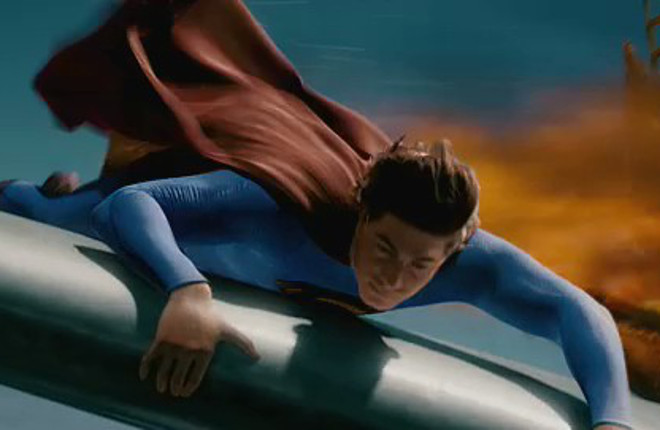
Such scenes also live and die on their CGI, and Sony Pictures Imageworks’ efforts on the plane rescue are downright dazzling. Superman Returns’ visual effects are a bit patchy overall, but here? They’re near-perfect.
Notably, unlike much of the rest of the film, the CG stand-in for Brandon Routh is often indistinguishable from the actor himself. This is especially the case when Superman releases the shuttle into space – the digital double in these shots is so spot-on that most people will assume they’re looking at Routh trussed up in a flying rig, not a pixelated performer!
The same goes for the digital morphing between Routh and his digital double throughout the rest of the sequence. It’s often hard to tell when the switchover has happened, which means we can invest in Routh’s performance and forge a human connection with him, even when we’re actually looking at his artificial counterpart.
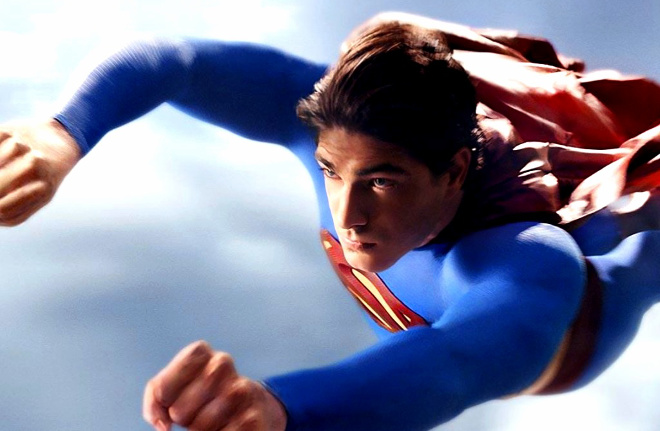
The SPI crew should also take a bow for the film’s flying visual effects.
Superman Returns represents a huge leap forward on this front, as the Man of Steel’s movement along the Z-axis – that is, the way he flies towards and away from the camera, not just side-to-side – is a huge step up from previous sequences in the Superman franchise. The plane rescue scene benefits the most from this VFX breakthrough; shots of Superman swooping down the fuselage towards the 777’s nose are a particularly vivid example of what I’m talking about here.
Speaking of the fuselage, Singer and SPI’s effects gurus deserve additional kudos for adding little grace notes – such as the shock ripples that distort the plane as the Man of Steel brings it to a sudden stop – to help sell the scene’s believability. True, our main character can fly and toss entire continents into space, but that doesn’t mean we don’t need a little help suspending our disbelief, and SPI has it covered.
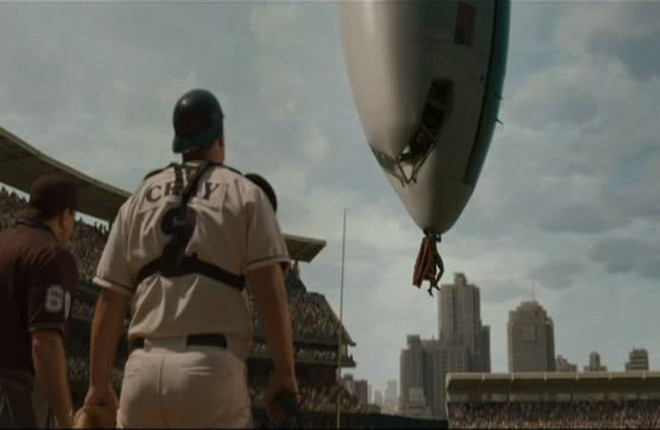
Which isn’t to say that SPI gets everything right. For one thing, the close-up shots of Routh’s digital double manhandling the nose of the plane weren’t exactly convincing back in 2006 and look even sketchier now.
It’s worth flagging that the shots of Superman’s famed heat vision are a tad underwhelming, too. The heat haze-inspired optical distortion effect is decently rendered, but the low-key microwave beams shooting out of our hero’s peepers in Superman Returns are almost too subdued.
Still, these are minor quibbles, and all in all, the digital effects in the Superman Returns plane rescue scene are top-notch.
It’s all about the characters
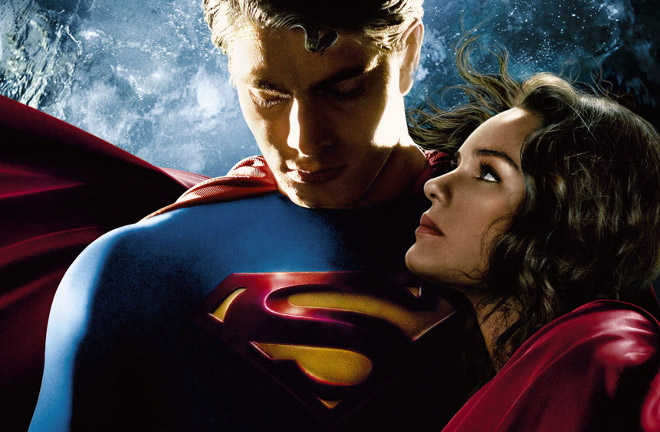
Of course, spectacle and visual effects are all well and good, but they don’t make a truly great superhero movie set piece – for that, you need character.
Fortunately, the Superman Returns plane scene has this in spades. Singer, Dougherty, and Harris never miss an opportunity to insert little character beats that serve a dual purpose: they help us get to know Superman and Lois better now so that we give a damn about what happens to them later. Granted, Lois’ role in the scene is largely just to be ragdolled around the cabin while handling classic damsel in distress duties. Nevertheless, she does get at least two brief, important moments along the way.
The first is when her gaze immediately shifts to the window when trouble first strikes – an unspoken confirmation that she still carries a torch for Superman (or at the very least, has faith that he’ll always bail her out). The second is when she puts herself in harm’s way to come to the aid of one of her fellow journalists. It’s a decision that puts her in greater peril, but one that also speaks volumes about the heroic, selfless heart that beats beneath her jaded exterior.
Superman’s character development in the plane rescue is equally understated, but equally as telling. Perhaps the most subtle insight into who the Man of Steel is comes after one of the 777’s wings tears off. As the gigantic piece of debris goes tumbling back to Earth, Superman’s head momentarily whips around to watch it fall, before tearing after the plane again. It’s a minor detail, but one that absolutely nails who he is and what makes him a hero.
Why? Because what Superman is doing here is quickly assessing where the wing is going to land. Once he realises it’s going to land harmlessly in the sea below him, he can disregard it – but not a moment sooner. It’s a blink-and-you’ll-miss-it refresher of Superman’s deepest nature: he doesn’t follow a “greatest good” ethos; he chooses to save everyone, no matter what.
A frustrating hint of what might have been
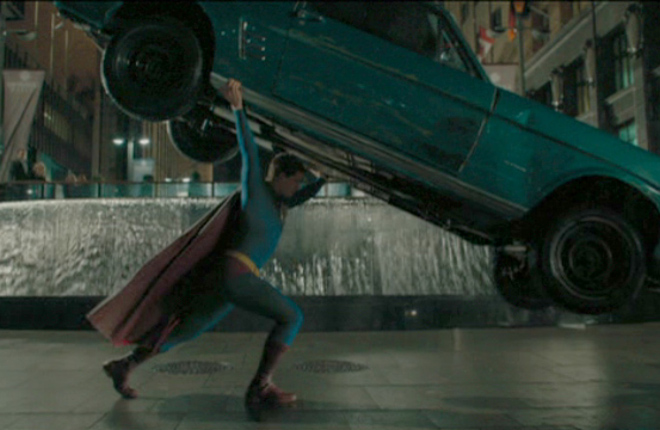
Superman Returns isn’t the most fondly regarded comic book flick of the last decade, but its plane rescue scene is nevertheless one of the greatest superhero movie set pieces of all time. Indeed, if the rest of Bryan Singer’s film had hit the same standard, it could have reached the same heights as its high-flying hero.
Agree? Disagree? Let me know in the comments below or on Twitter or Facebook!
